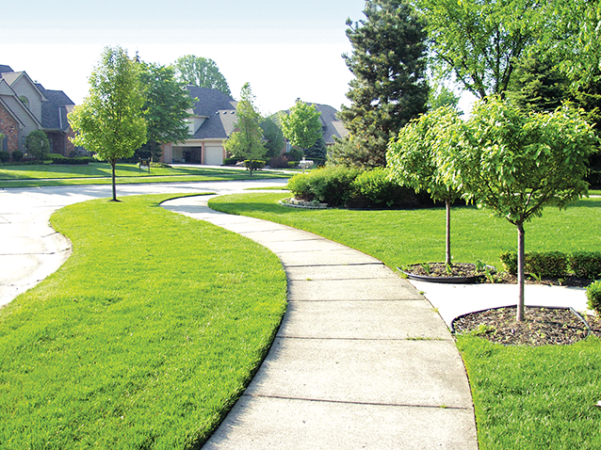Homeowners’ fasciation with a lush, green lawn is something that has developed over time and is still “growing” strong. According to a 2019 survey conducted on behalf of the National Association of Landscape Professionals, 81 percent of all Americans had lawns and 79 percent said a lawn is an important feature when buying or renting a property.
Even though lush lawns are still coveted, due to drought, the financial climate and even invading insect populations, many people are taking inventory of their landscapes and deciding if a lawn is a priority, even going so far as to reinvent their spaces with lawn alternatives. Still, there are ways to keep properties green no matter which route is taken. Here’s a look at some environmentally friendly ways to address a landscape.
Irrigate from below
There are many ways to water landscapes, but homeowners may want to take their cues from the commercial farming industry. Drip irrigation systems utilize a network of valves, pipes and tubing close to the roots of plants or under the soil. Such systems are more efficient than surface irrigation options, helping to save water and nutrients in the soil.
Water early
Scotts Lawn Care suggests watering a lawn in the morning before 10 a.m. when it is cooler and winds tend to be calmer. This ensures water can be absorbed into the soil and grass roots before evaporation occurs. Watering midday may cause the water droplets on the lawn blades to heat up and actually scorch the lawn.
Plant a new grass type
Homeowners can experiment with eco-friendly grass seed blends that mix native grasses and may not require as much water nor ideal growing conditions.
Utilize green alternatives
Rather than focusing solely on grass, some homeowners are turning to alternatives like clover and even moss, particularly if their landscapes do not have the most pristine growing conditions. This may reduce the need for chemical fertilizers and herbicides. The result is still a green, inviting yard.
Watch the lawn height
Mowing too frequently or at too low a height may compromise the lawn’s ability to thrive. Grass cut to the proper height develops a deep root system to better locate water and nutrients in the soil. That means homeowners may not have to water as much or as frequently. Taller lawns also shade the soil and the roots, reducing some evaporation.
Compost
Leave the clippings on the lawn to break down and further feed nutrients to the lawn, helping it look greener and thrive. Furthermore, rely on supplementation with compost to reinforce the nutrient profile in the soil. The National Resources Defense Council says composting is the natural process of recycling organic matter, such as leaves and food scraps, into a valuable fertilizer. It doesn’t take much to nurture compost in a yard.
Green landscapes are possible with a few tips that help conserve water and maximize natural resources.




